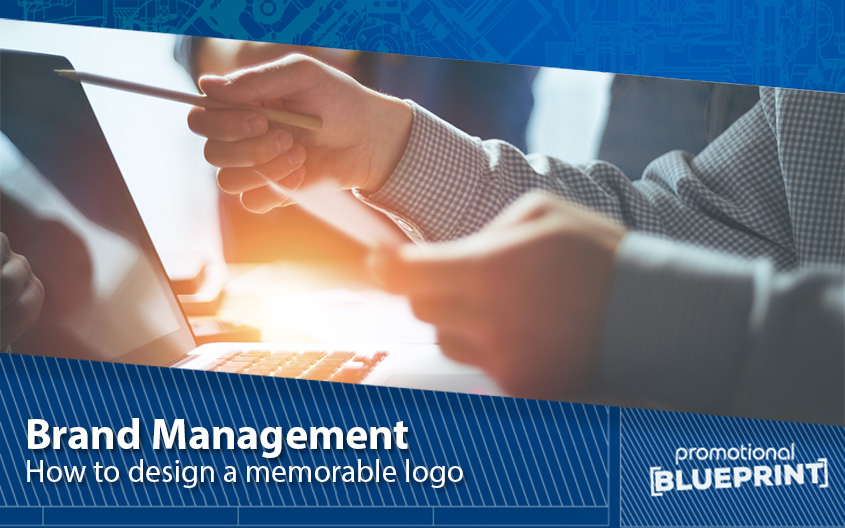
Every new company looking to get their foot in the door receives similar advice about what to do to achieve success—use clever marketing to stand out. Though quality products are crucial for creating a loyal customer base, a solid marketing campaign will get them to buy the products in the first place.
However, even brands with the most innovative advertising campaign often neglect a crucial part of brand awareness—the logo. A logo is the face of a brand. It’s the first thing customers notice when they come across a product. Therefore, having a quality logo is pivotal if a brand wants to make an impact and become recognised.
But how does a company design an eye-catching logo? To create a favourable image for themselves, brands must first understand the basics of logos—how they work, why they matter, and what a logo says about a brand.
Logos 101
What makes a logo good? Most people who aren’t familiar with graphic design would probably say looking pretty. To some extent, this is true. An aesthetically pleasing logo is definitely going to appeal to customers more than an unattractive one. However, as the old saying goes, beauty isn’t everything. And in the case of logo design, a pretty logo is not going to be of much use if it does a poor job of communicating the brand’s core message.
Therefore, before a company can focus on any other aspect of its marketing, it first needs to create a suitable logo. The best way to do this is to hire an experienced graphic designer. But having a professional on board doesn’t mean the work is complete.
The key to creating a good logo design is understanding the impact it has on its audience and what a logo says about a brand.
1. A Logo Is the Face of a Company
When asked to name some of the most iconic logos in the world, most people would probably think of the big three—Apple’s half-eaten fruit, McDonald’s Golden arches and Coca-Cola’s archetypal cursive writing. Though each logo is drastically different both in terms of colour and design, they all have one thing in common. They’re the face of the company.
These logos are as emblematic of a brand as the products it sells. In fact, recent studies show that over 78% of consumers believe that a logo communicates a brand’s personality, business model, and values. If the logo fails to communicate the business model accurately, brands may end up losing revenue.
Take, for example, a restaurant that aims to promote itself as a family-oriented establishment. However, if the logo they choose to represent what they’re about is a shot glass or a beer mug, the restaurant ends up looking more like a bar. This misleading image completely alienates a big portion of its target demographic.
Therefore, when it comes to logo design, accuracy is the key to generating the best possible engagement.
2. Stylish Logos Enhance a Brand’s Appeal
While a brand logo should accurately represent a business, accuracy isn’t the end of the story. The same research mentioned earlier reveals that over 60% of consumers reported they wouldn’t do business with a brand if their logo was unappealing, even if a brand had nothing but positive reviews.
So accuracy along with visual appeal is necessary for creating a satisfactory logo. Consequently, a stylish logo is a must-have for any brand looking to stand out. However, this is easier said than done.
Style is subjective and highly dependent on individual taste and the trends currently dominating the market. So, before choosing a particular style, companies need to do their research and see what their customer base finds appealing. What’s more, they should also consider what style best suits their business model.
Style doesn’t just make a brand visually appealing—it can also reflect a brand’s business model. For example, a bold, colourful logo with cursive lettering will not work for a low-key business that sells tech products. At the same time, a simple, minimalist logo is not going to help a fast-food company appeal to its customers’ taste buds.
Therefore, when it comes to style, it’s not just about choosing what looks nice or what’s currently in. It’s about finding the right balance between something that appeals to customers and reflects a brand well.
3. The Font Can’t Be Underestimated
Many of the most recognisable logos like Apple, Starbucks, and Nike consist only of symbols. Therefore, many companies think they can just use an emblem to represent their business. This is a big mistake.
The reason big brands can get away with a symbol and no company name is that they’re already successful. The general public is so familiar with the emblem they don’t need to have the company name underneath it to know what brand the logo represents. Newer companies don’t have that advantage. Consequently, when designing their logo, they need to consider how they’re going to represent their company name.
Here, brands have two options. They can either create a symbol and attach their brand name to it or make a logo out of the company name itself. Whichever option a company goes for, they can’t overlook the type of font for the brand name.
First, a company should consider font style because, as mentioned, the style reflects what the brand is about. However, what’s even more important for fonts specifically is their visibility. Cursive writing is beautiful; however, when looking at it from a distance, it may be difficult to read. Consequently, a bland font may be easy to read, but it won’t do much to capture customers’ attention.
In summary, picking out a readable yet eye-catching font for the logo is imperative for creating a visible brand.
4. The Right Colours Can Make or Break a Logo
Another component of a stylish logo is the colour. In fact, colours are what most stand out when it comes to a company logo. This has to do with human psychology and how different colours impact perception.
For example, cool-toned colours like blue or purple are considered calming. They’re often associated with feelings of reliability and professionalism, which allows consumers to perceive a brand as reliable. As a result, it’s not surprising that the most popular tech companies like Skype, Twitter, and Facebook have blue logos.
On the other hand, warm, vibrant colours like red are a favourite among food brands. According to research, combinations of warm colours increase people’s appetite. Not to mention that red is very bold and eye-catching, which helps logos stand out in the hyper-competitive fast food industry.
To summarise, every colour has its own unique meaning and can trigger very specific feelings in customers. Hacking the subliminal power of colours is what a brand should do if they want to stay on top of their public image.
5. Quality Logos Are the Most Successful Logos
It may seem a bit redundant to point out that a logo should be high-quality. However, since a good graphic designer can cost a pretty penny, many brands feel tempted to create a logo on their own or hire a cheaper freelancer for the job. To be clear, a budget-friendly graphic designer isn’t always going to create a terrible product.
However, more often than not, amateurs charge less because they lack the necessary experience to come up with an appropriate logo. As a result, a brand gets exactly what it paid for—a couple of shoddy squiggles hastily pieced together in the MS Paint app. In short, it’s definitely the last thing a brand wants to represent its business in public. So, if a company wants to secure a high-quality logo, they need to invest in a professional graphic designer.
Key Takeaways
Good products help a company maintain its success. However, in order to achieve success in the first place, a company needs to invest in a well-made logo. What a logo says about a brand plays a crucial role in brand awareness. For one, logos are the first thing customers see when coming into contact with a brand.
The logo’s look, colour, visibility, and style all influence customers’ first impressions of what a brand is all about. But most importantly, logos have the power to influence people’s decision to give a brand their business. Thus, brands looking to beat out their competition need to make sure their logo is the best of them all.
You may also like:
Brand Managment Know-How
If you require further information or have any specific questions, don’t hesitate to give a member of our experienced team a call on 0800 0148 970 or simply email us today.






